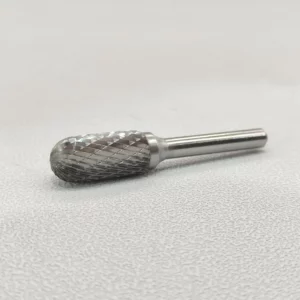Carbide burrs are versatile rotary tools widely used in various industries for shaping, grinding, and deburring tasks. With their exceptional durability and cutting capabilities, carbide burrs have become an indispensable tool for professionals and craftsmen. In this article, we will delve into the different types of carbide burrs and explore their applications across different fields.
Table of Contents
ToggleTypes of Carbide Burrs
Carbide burrs come in a variety of shapes and designs, each tailored to suit specific applications. Let’s examine some of the most common types:
Single Cut Burrs: These burrs feature a single set of flutes running parallel to the tool’s axis. They are ideal for general-purpose deburring, shaping, and light material removal tasks.
Double Cut Burrs: Double cut burrs have two sets of flutes crossing each other. They provide finer surface finishes and are suitable for precision work, such as contouring and blending.
Aluminum Cut Burrs: Designed for non-ferrous metals like aluminum, these burrs have a specific tooth geometry that prevents clogging and ensures efficient material removal.
Diamond Cut Burrs: These burrs are embedded with diamond particles, making them exceptionally durable and ideal for grinding hard materials such as ceramics, glass, and stone.
Coarse Cut Burrs: With fewer flutes and larger teeth, coarse cut burrs are perfect for rapid stock removal on materials like cast iron, steel, and stainless steel.
Applications of Carbide Burrs
The versatility of carbide burrs allows them to be employed in a wide range of applications. Let’s explore some common fields where carbide burrs find extensive use:
Metal Fabrication: Carbide burrs excel in metalworking tasks, including deburring sharp edges, weld seam blending, and removing excess material during fabrication processes.
Woodworking: In woodworking, carbide burrs are used for shaping, sculpting, and creating intricate designs on wood surfaces. They are efficient in removing bark, smoothing rough edges, and hollowing out grooves.
Automotive Industry: Carbide burrs play a crucial role in the automotive industry for tasks like porting and polishing engine components, removing gaskets, and repairing cylinder heads.
Aerospace Engineering: From deburring precision components to modifying turbine blades, carbide burrs are vital in aerospace engineering, ensuring precise and efficient metalworking operations.
Dental and Medical Applications: Carbide burrs find applications in dental and medical procedures, such as trimming and shaping dental prosthetics, removing bone material, and preparing surgical tools.
Jewelry Making: Jewelers employ carbide burrs to carve intricate designs, shape metal components, and refine the surface of precious metals like gold and silver.
Carbide burrs have revolutionized the way professionals approach shaping, grinding, and deburring tasks across various industries. Their versatility, durability, and cutting efficiency make them indispensable tools in metalworking, woodworking, automotive, aerospace, dental, and jewelry-making applications.
Understanding the different types of carbide burrs and their specific applications enables professionals to choose the most suitable tool for their tasks, ensuring precise and efficient results. With carbide burrs at their disposal, craftsmen and professionals can unleash their creativity and achieve exceptional quality in their work.
Lorem ipsum dolor sit amet, consectetur adipiscing elit. Ut elit tellus, luctus nec ullamcorper mattis, pulvinar dapibus leo.
